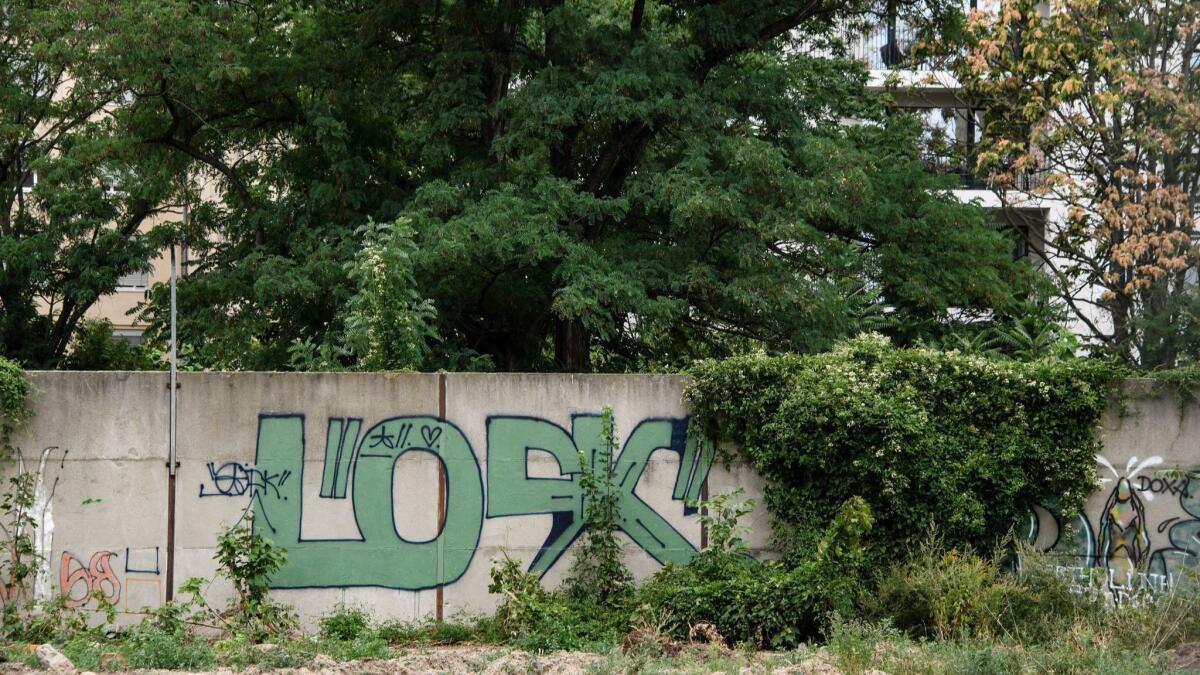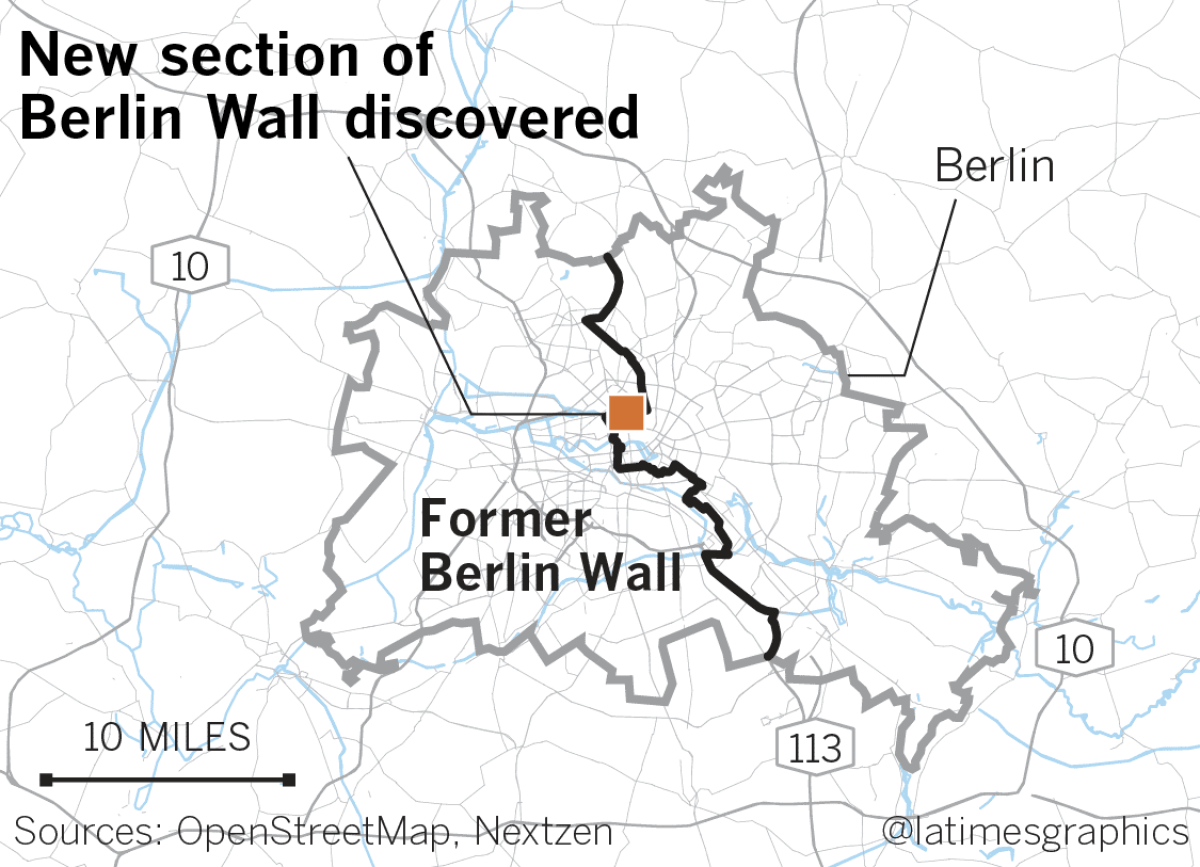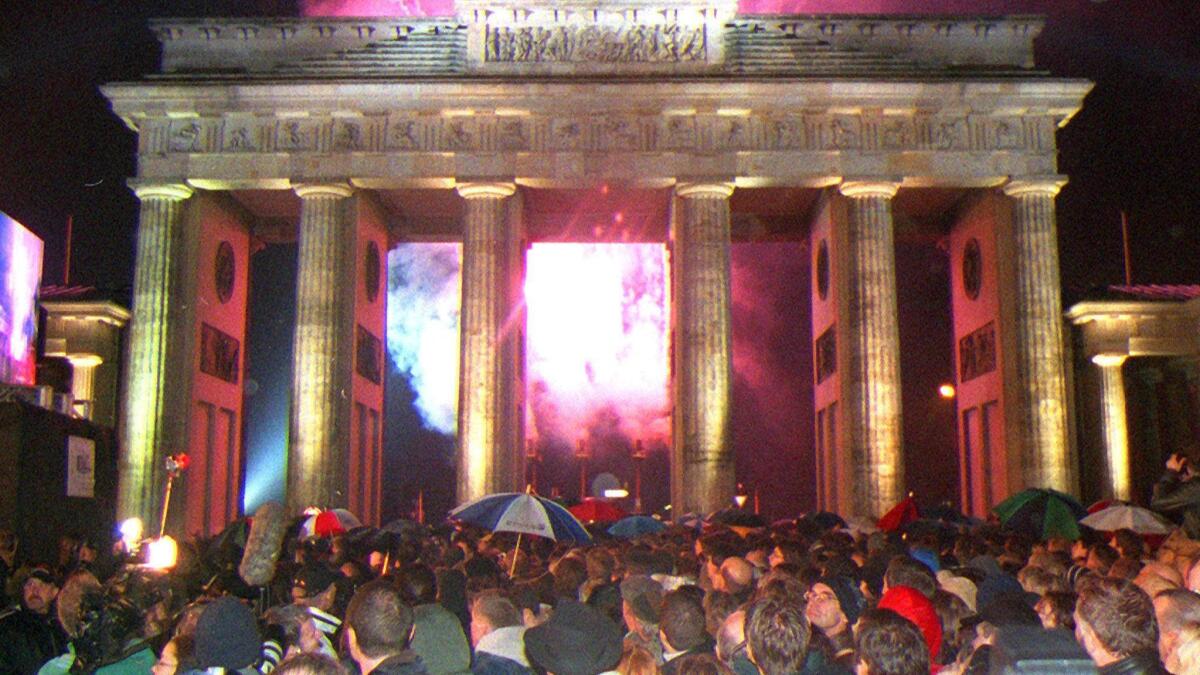Lost amid the weeds and brush, a 65-foot-long section of the Berlin Wall reappears

- Share via
Reporting from Berlin — Nearly 30 years after the Berlin Wall was toppled, a 65-foot-long section of the barrier has been discovered — hidden behind bush, weeds and overgrown trees that over the years slowly obscured a remnant of one of the Cold War era’s most divisive symbols.
Officials confirmed Wednesday that the 11-foot-high concrete slabs found in the heart of the German capital had formed part of an inner security barrier to keep East Germans from even getting close to the outer wall to West Berlin. The discovery was both a fresh reminder of the Iron Curtain that once seemed to split the world and an illustration of how neglected parts of Berlin still are, even three decades after the wall fell.
“There was such a rush to tear down the Berlin Wall as quickly as possible after it opened nearly 30 years ago that it was all a bit chaotic at the time,” said Jochen Staadt, a researcher at Berlin’s Free University who has studied the Berlin Wall and those who were killed trying to scale it. “Everyone thought it was so important to tear the whole thing down fast so pieces like this were evidently overlooked.
“They just wanted it gone,” he said.
But now, just after Berlin solemnly marked the anniversary of the wall’s construction in 1961, Germans were taking stock of the curious finding of the semi-concealed gray concrete blocks with the same fervor accorded an important archaeological discovery. Local authorities quickly placed the graffiti-strewn wall under monument protection status.
Because almost no one gave any thought to preserving any section of the 95-mile-long Berlin Wall when it came down, all but a few small sections were knocked down and ground up, mostly for use as pavement in the reunified city. Thousands of small chipped pieces of the wall were sold to tourists while some slabs were sent to locations around the world to serve as memorials.
It was only when tourists and historians began pushing for preservation of the few remaining sections of the despised barrier that authorities began to preserve what remained of the wall and even started rebuilding sections that had been hastily torn down decades ago. Another vestige of the wall was uncovered in northern Berlin in February, though a local man said he’d known about it for years but kept it secret, fearing the city wasn’t ready for such a discovery.
The remains of the Berlin Wall have since become one of the city’s chief tourist attractions.
“I was totally surprised that there were still undiscovered pieces of the Berlin Wall left,” said Ephraim Gothe, a local city leader, in an interview with a German news agency after the latest discovery. He said the section of the inner security wall that sealed off the death strip for East Germans was probably built around 1985, four years before East Germans breached the concrete barrier in 1989’s peaceful revolution.

The graffiti-covered remnant was actually discovered in June by a group of tourists wandering through the thick underbrush in the area just north of the government quarters and near the new headquarters of Germany’s BND intelligence agency. Its authenticity as a piece of the Berlin Wall, however, was confirmed only this week.
Staadt and others researchers at Berlin’s Free University have been studying the East German Stasi security police archives over the decades to try to ascertain the true number of people killed trying to scale the Berlin Wall to escape into the western part of the city. So far, they said they have confirmed 140 deaths along the Berlin Wall between 1961 and 1989.

“The Berlin Wall is a phenomenon that will likely always remain deeply etched into the culture of the city,” Staadt said, reflecting on the media buzz after the most recent discovery. “Many younger people don’t even know today where the wall went between East and West Berlin. But they all know the wall was there and it was monstrous. And they know lots of people took risks and many were killed trying to cross it.”
An estimated 5,000 successfully escaped over the wall and into West Berlin between 1961 and 1989. But about 75,000 were also captured and sentenced to prison for trying to escape — Republikflucht, or fleeing the republic, was a serious crime in East Germany punishable by three years in jail.
Kirschbaum is a special correspondent.
More to Read
Sign up for Essential California
The most important California stories and recommendations in your inbox every morning.
You may occasionally receive promotional content from the Los Angeles Times.










